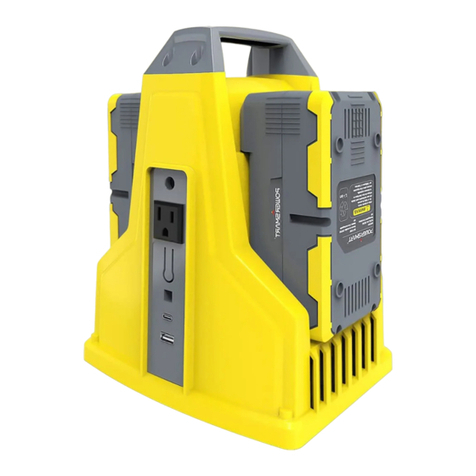
GENERAL SAFETY PROCEDURES
For any questions regarding the hazard and safety notices listed in this manual or on the product, please
call (800) 791-9458 Mon-Fri 9-5 EST before using the generator.
DANGER: CARBON MONOXIDE
Using a generator indoors CAN KILL YOU IN MINUTES. Generator exhaust contains carbon monoxide
(CO). This is a poison gas you cannot see or smell. If you can smell the generator exhaust, you are
breathing CO. But even if you cannot smell the exhaust, you could be breathing CO.
NEVER use a generator inside homes, garages, crawlspaces, or other partly enclosed areas. Deadlylevels
of carbon monoxide can build up in these areas. Using a fan or opening windows and doors does NOT
supply enough fresh air. ONLY use a generator outside and far away from windows, doors, and vents.
These openings can pull in generator exhaust.
Even if you use a generator correctly, CO may leak into the home. ALWAYS use a battery-powered or
battery-backup CO alarm in the home. If you start to feel sick, dizzy, or weak after the generator has been
running, move to fresh air RIGHT AWAY. See a doctor. You may have carbon monoxide poisoning.
WARNING: The exhaust from this product contains chemicals known to the State of
California to cause cancer, birth defects, or other reproductive harm.
WARNING: This generator may emit highly flammable and explosive gasoline vapors,
which can cause severe burns or even death if ignited. A nearby open flame can lead to
explosion even if it isn’t directly in contact with gasoline.
•Do not operate near open flame.
•Do not smoke near generator.
•Always operate on a firm, level surface.
•Always turn generator off before refueling. Allow generator to cool for at least 2 minutes before
removing fuel cap. Loosen cap slowly to relieve pressure in tank.
•Do not overfill fuel tank. Gasoline may expand during operation. Do not fill to the top of the tank.
Allow for expansion.
•Always check for spilled fuel before operating.
•Empty fuel tank before storing or transporting the generator.
WARNING: This generator produces powerful voltage, which can result in electrocution.
•ALWAYS ground the generator before using it (see the “Ground the Generator” portion of the
“GENERATOR PREPARATION” section).
•Generator should only be plugged into electrical devices, either directly or with an extension
cord.
NEVER connect to a building electrical system without a qualified electrician. Such connections must
comply with local electrical laws and codes. Failure to comply can create a back-feed, which may result
in serious injury or death to utility workers.
•Use a ground fault circuit interrupter (GFCI) in highly conductive areas such as metal decking or
steel work. GFCIs are available in-line with some extension cords.
•Do not use in rainy conditions.
•Do not touch bare wires or receptacles (outlets).
•Do not allow children or non-qualified persons to operate.




























